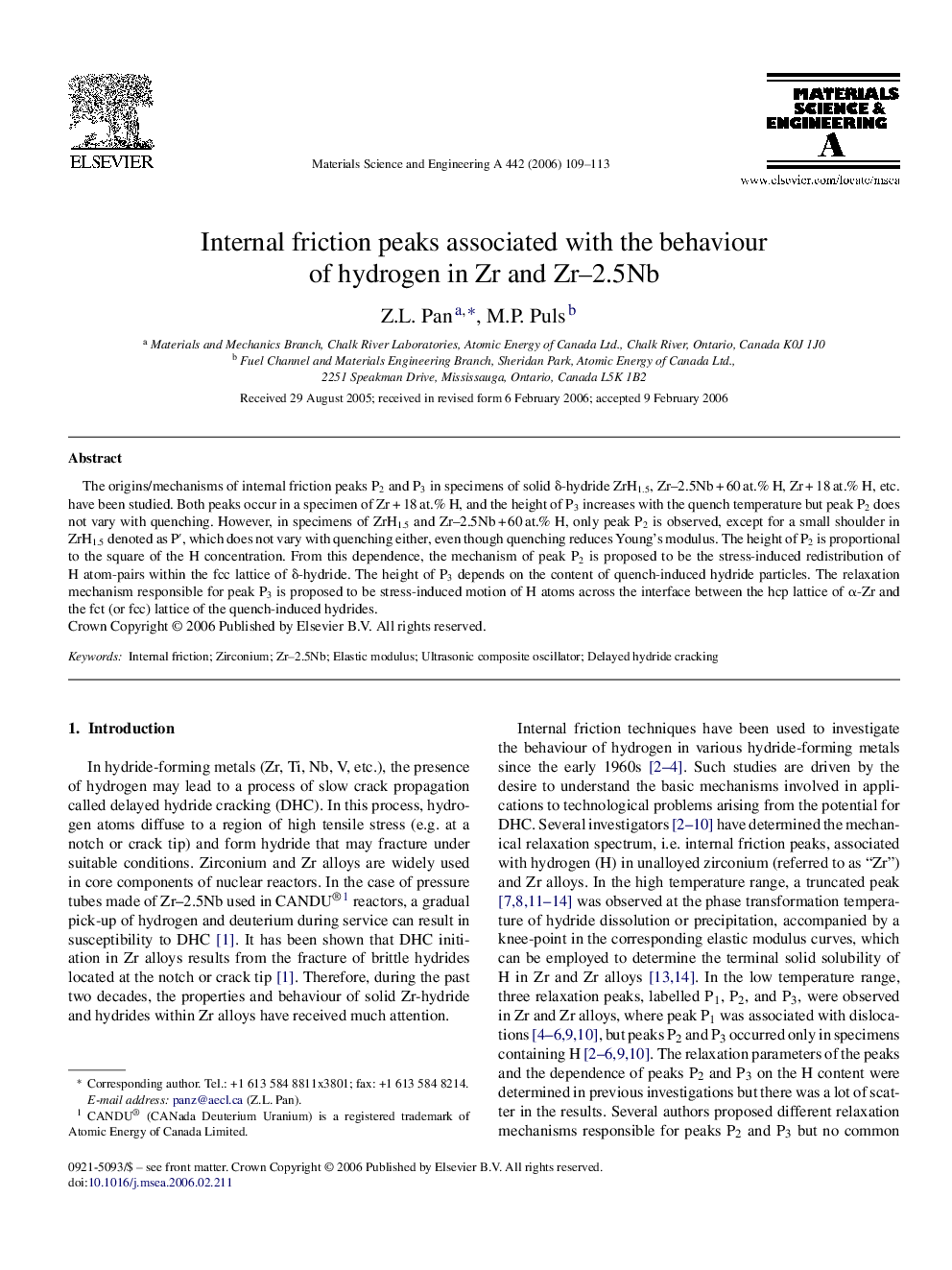| Article ID | Journal | Published Year | Pages | File Type |
|---|---|---|---|---|
| 1584622 | Materials Science and Engineering: A | 2006 | 5 Pages |
The origins/mechanisms of internal friction peaks P2 and P3 in specimens of solid δ-hydride ZrH1.5, Zr–2.5Nb + 60 at.% H, Zr + 18 at.% H, etc. have been studied. Both peaks occur in a specimen of Zr + 18 at.% H, and the height of P3 increases with the quench temperature but peak P2 does not vary with quenching. However, in specimens of ZrH1.5 and Zr–2.5Nb + 60 at.% H, only peak P2 is observed, except for a small shoulder in ZrH1.5 denoted as P′, which does not vary with quenching either, even though quenching reduces Young's modulus. The height of P2 is proportional to the square of the H concentration. From this dependence, the mechanism of peak P2 is proposed to be the stress-induced redistribution of H atom-pairs within the fcc lattice of δ-hydride. The height of P3 depends on the content of quench-induced hydride particles. The relaxation mechanism responsible for peak P3 is proposed to be stress-induced motion of H atoms across the interface between the hcp lattice of α-Zr and the fct (or fcc) lattice of the quench-induced hydrides.
